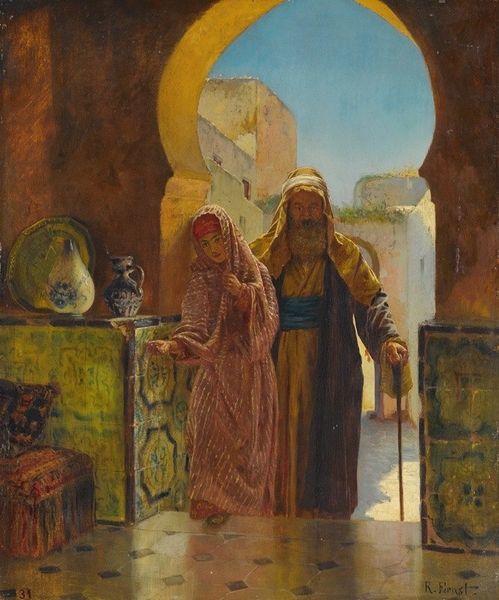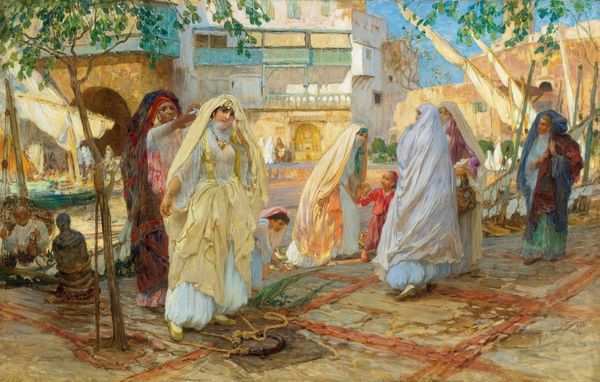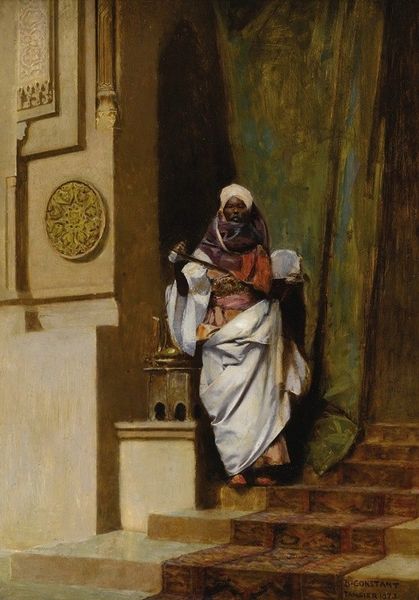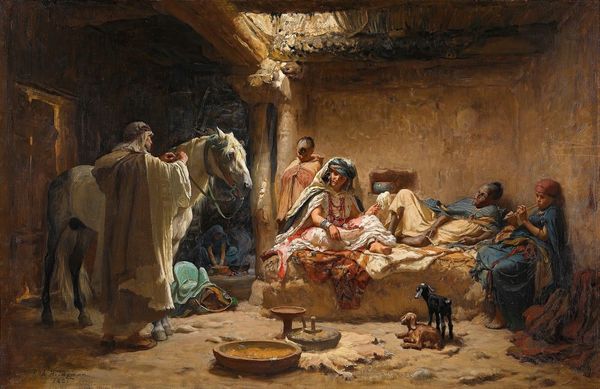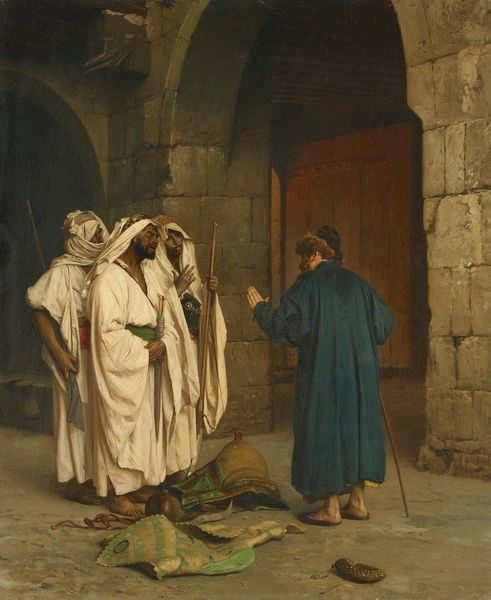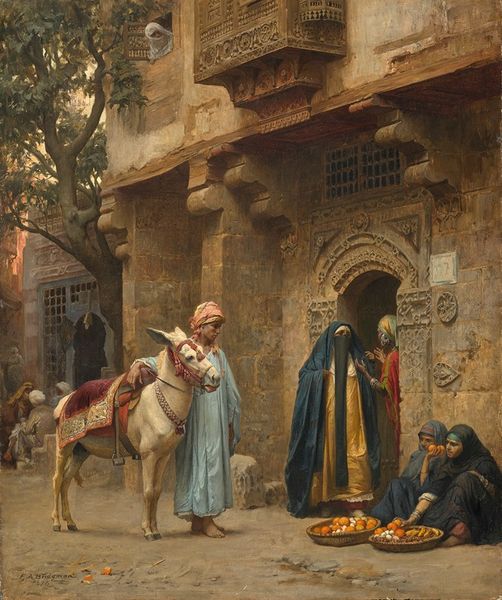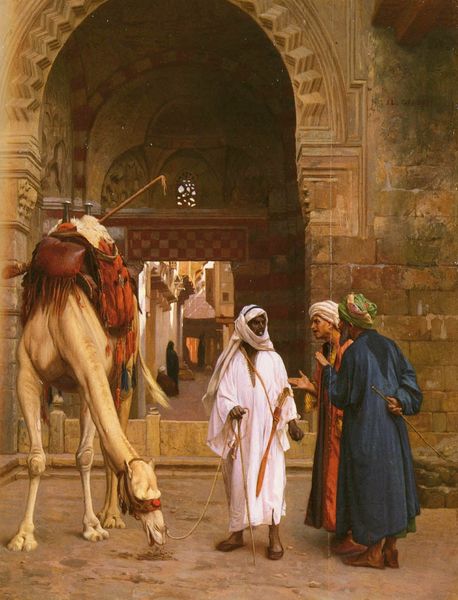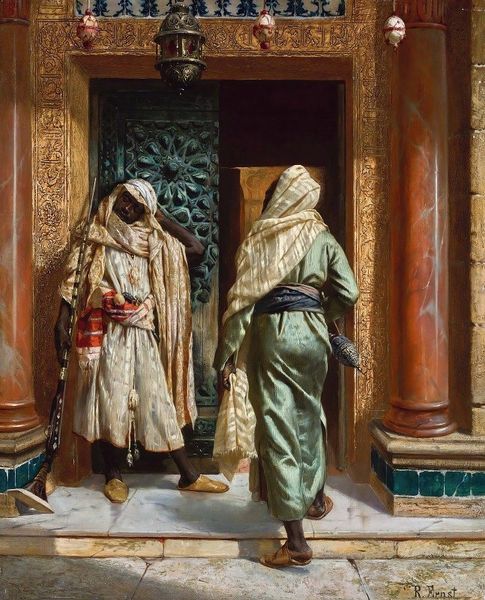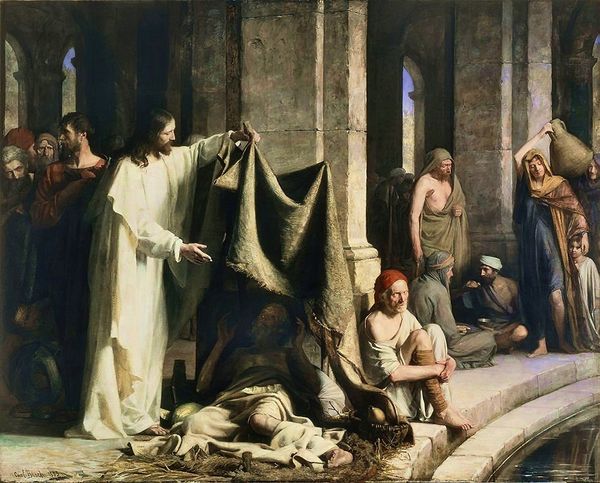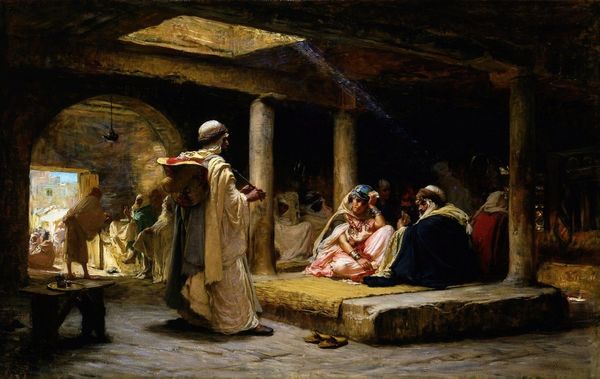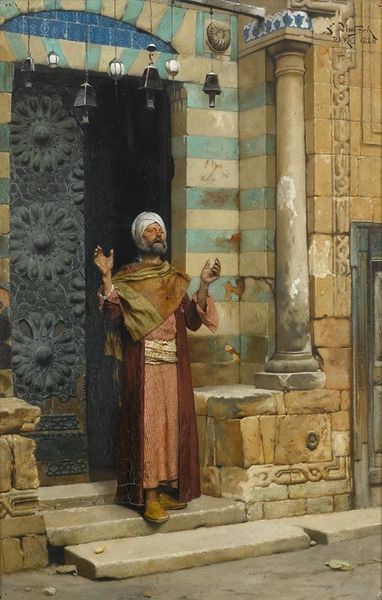
painting, oil-paint
#
portrait
#
figurative
#
narrative-art
#
painting
#
oil-paint
#
figuration
#
orientalism
#
genre-painting
#
history-painting
Copyright: Public Domain: Artvee
Rudolf Ernst painted "The Fortune Teller," capturing a scene imbued with both mystery and ancient tradition. Central to the composition is the act of divination, a practice echoing through millennia. Consider the opened book discarded on the floor, juxtaposed with the fortune teller, whose face we cannot see. This pose—the hand extended, the body turned away—is a potent symbol for the unknowable future and the human desire to grasp what is beyond our reach. The allure of prophecy is not unique to this time or place. Recall the oracles of Delphi, whose ambiguous pronouncements shaped the destinies of ancient Greece. The fortune teller, like the oracle, taps into a deep-seated human impulse to seek order in chaos, to glimpse the patterns underlying our lives. This connection to the esoteric evokes a profound emotional response, a blend of hope and apprehension. The image reminds us that the past is never truly gone. These symbols are not merely relics; they are living forces, constantly evolving yet forever linked to our collective memory.
Comments
No comments
Be the first to comment and join the conversation on the ultimate creative platform.
